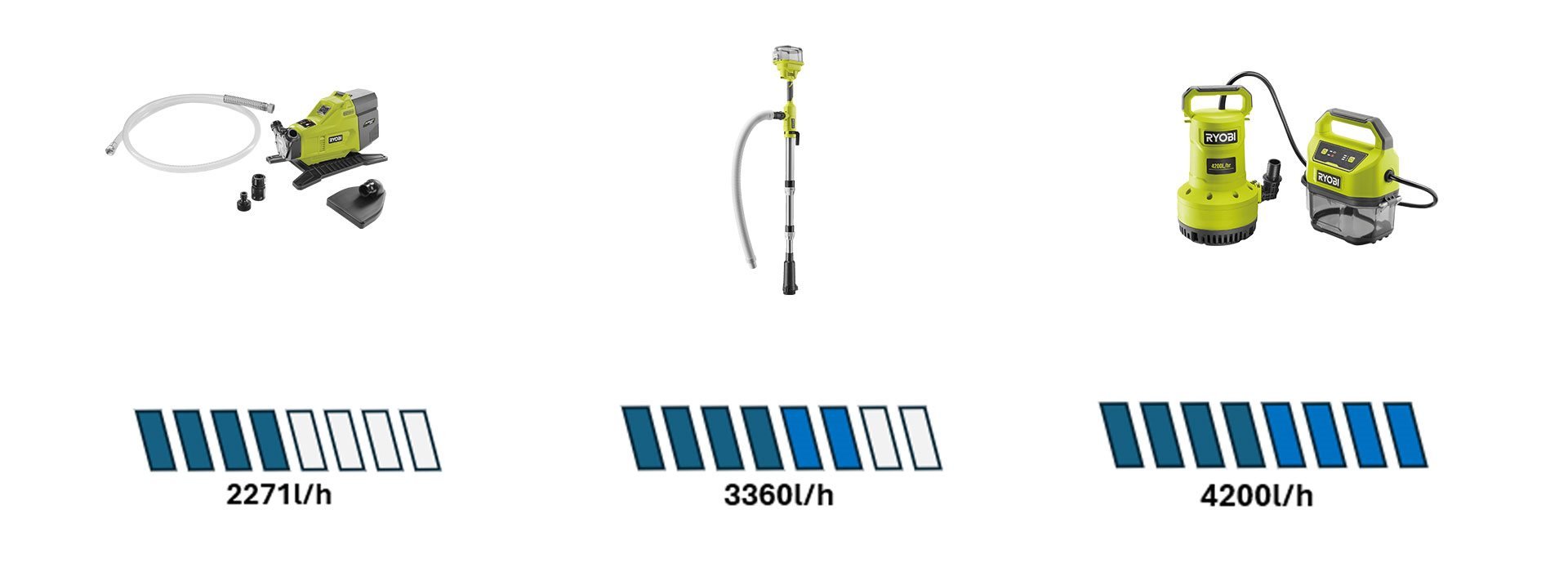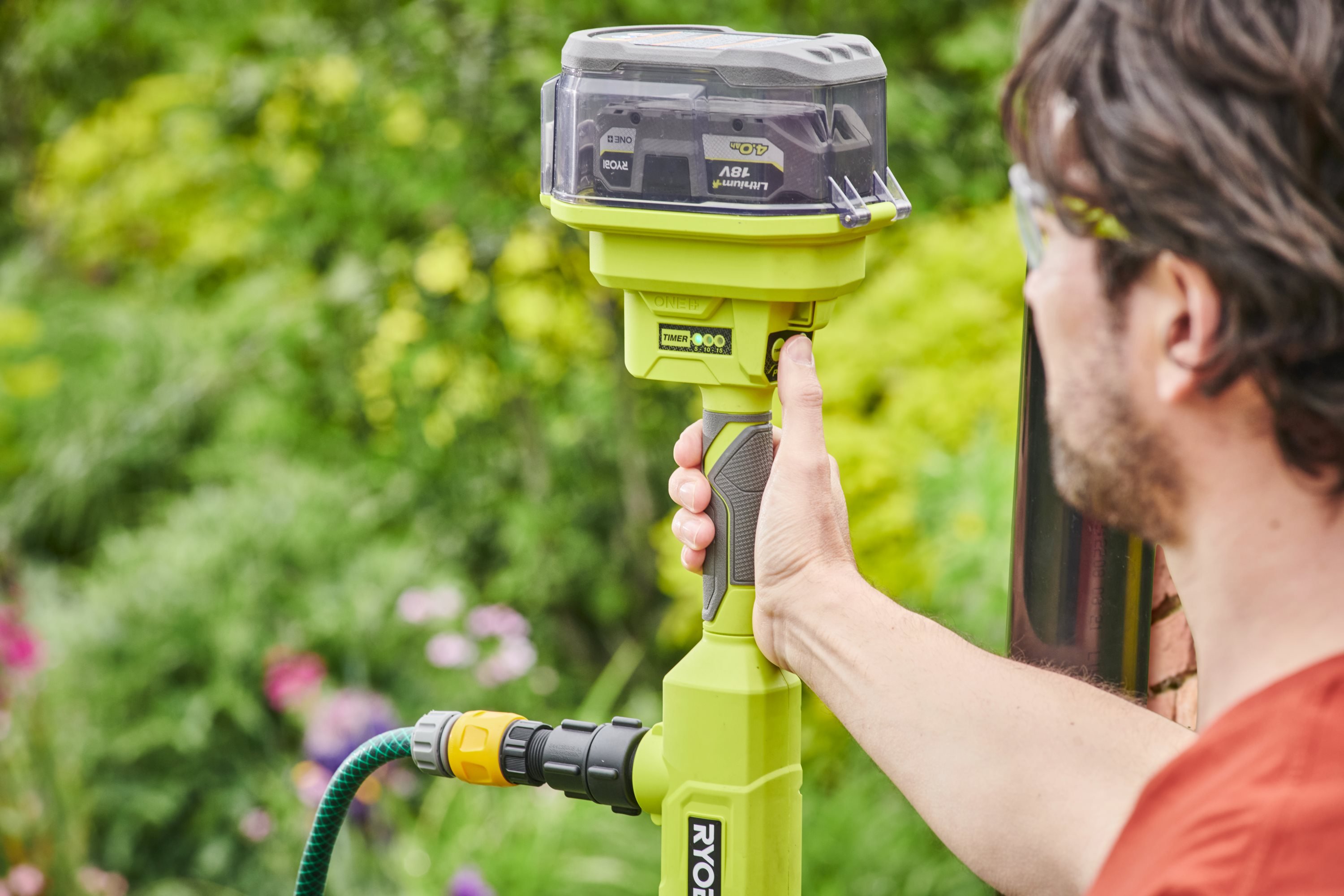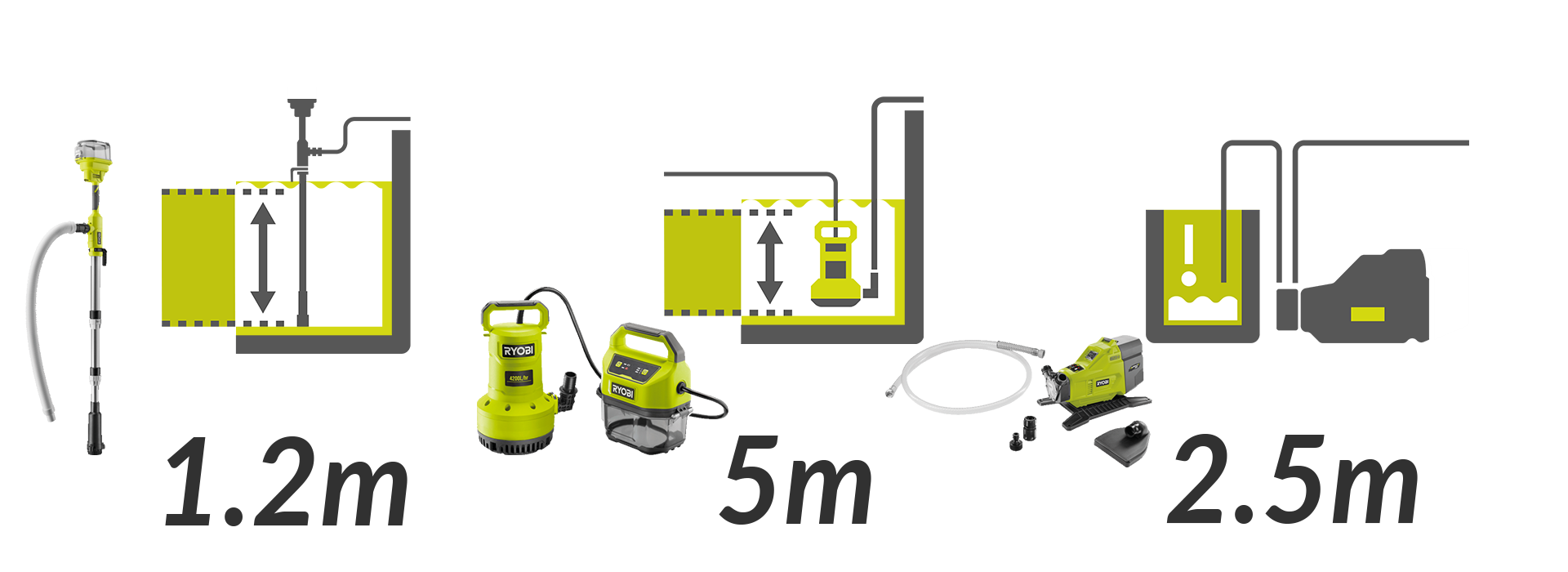Selecting the right water pump
When it comes to choosing the ideal water pump for your specific needs, there's a range of factors worth thinking about. We've broken down the key considerations:
Flow Rate
In simple terms, refers to how much water a pump can move in a certain amount of time. It's like measuring how fast a pump can transfer water from one place to another. Flow rate is usually expressed in units like gallons per minute (GPM) or liters per second (L/s) or litres per hour (l/h). So, if a pump has a higher flow rate, it can move more water quickly, while a pump with a lower flow rate moves less water in the same time. One important thing to remember, is that published flow rate is measured at 0m delivery height. This will make more sense when you read the section. At 0m, this is the max amount of flow that can be achieved before energy is lost moving water up or down. This measurement helps you understand how efficient and speedy a water pump is at doing its job of moving water around.

Delivery Height
Also known as maximum head or max head, refers to a critical specification in water pumps. It indicates the vertical distance a pump can effectively move water from its source to its destination. In other words, it measures the pump's ability to overcome gravity and lift water to a certain height.
Imagine you have a water source at ground level, and you need to move the water to an elevated location, such as a rooftop tank or an upper floor of a building. The delivery height is the maximum vertical distance, usually measured in feet or meters, that the pump can lift the water while still maintaining a reasonable flow rate.
What factors affect delivery height?
Pump Design: The design of the pump, including the impeller (the rotating component that drives water movement) and the pump's internal structure, plays a significant role in determining how effectively it can lift water.

Motor Power: The power of the pump's motor affects its ability to generate the force necessary to lift water against gravity. Higher motor power often correlates with a higher delivery height.
Efficiency: A pump's efficiency determines how much of the input energy is converted into lifting the water. More efficient pumps can achieve greater delivery heights with the same power input.
Pipe Diameter and Length: The size and length of the pipes through which the water is pumped affects the pressure. For example, a wider hose requires more pressure to deliver water upward.
.jpg?v=1718032484000)
Minimum Suction Level
Think of a submersible pump like a straw in a glass of water. Just like you can't drink if the straw is held too high above the water, a pump has a lowest point it can pull water from. If the water level goes below this point, the pump might suck in air instead of water, which is bad for the pump.
Ryobi’s pumps are fitted with sensors which allow the pump to switch off when the source is dry! So there is no need to worry.
Residual Water Level
You know when you tilt a glass to finish the last bit of water? There's always a little left that you can't drink. Similarly, after a pump stops working, there's a lowest point where water stays inside. It's important to know this level so the pump doesn't end up working without enough water, which could harm it.
If you are wanting to small amounts of water in tight narrow spaces, a transfer pump and attachment would well.
.jpg?v=1718023860000)
Immersion Depth vs Suction Lift
When it comes to submersible and pole pumps, you'll often see immersion depth listed, but not suction lift. That's because suction lift is specific to transfer pumps, which are designed to operate outside of the water source.
Suction Lift: This term refers to a pump's ability to pull water through the intake hose. For example, if you use the included 1.2m intake hose, the pump can lift water from a depth of 1.2m. However, if your water source is further down, you can extend this reach using a hose connector & your own hose to up to 5.2m long. Imagine a leak in your basement with your pump set up at ground level – you could easily evacuate that water using a transfer pump.
Immersion Depth: This indicates how far you can submerge your pump into a body of water. For our submersible pump, you can drop it up to 5m deep, which is determined by the cable length between the pump and the battery enclosure. On the other hand, stick pumps can telescope from 0.7 to 1.2m, meaning they aren't suitable for evacuating water from sources deeper than this range.
Here are some examples of the Immersion Depth and Suction Lift of RYOBI's pumps.

Thank you sincerely for investing your time in our comprehensive guide on water pumps. We hope you've enjoyed this 'deep dive' into the world of water pumping and that it has equipped you with the knowledge needed to make informed decisions about your water management needs. Here's to smooth-flowing operations and a hydrated future. Thank you for your readership.